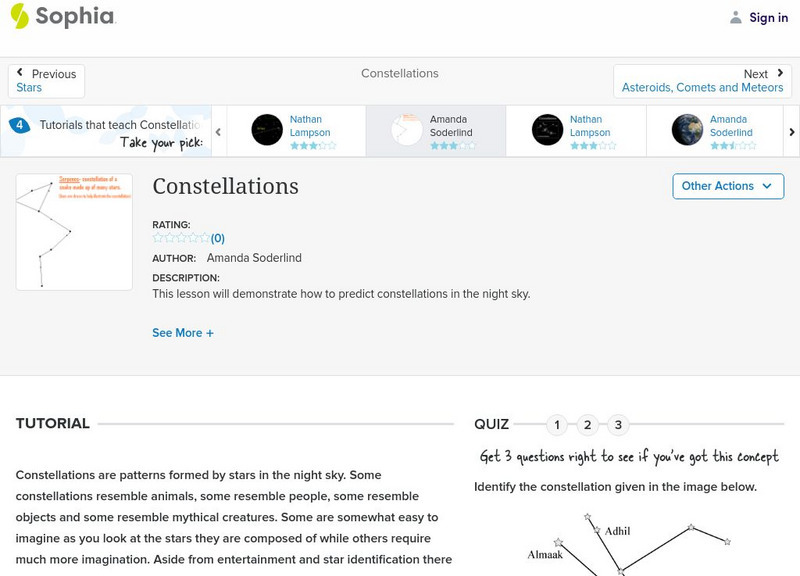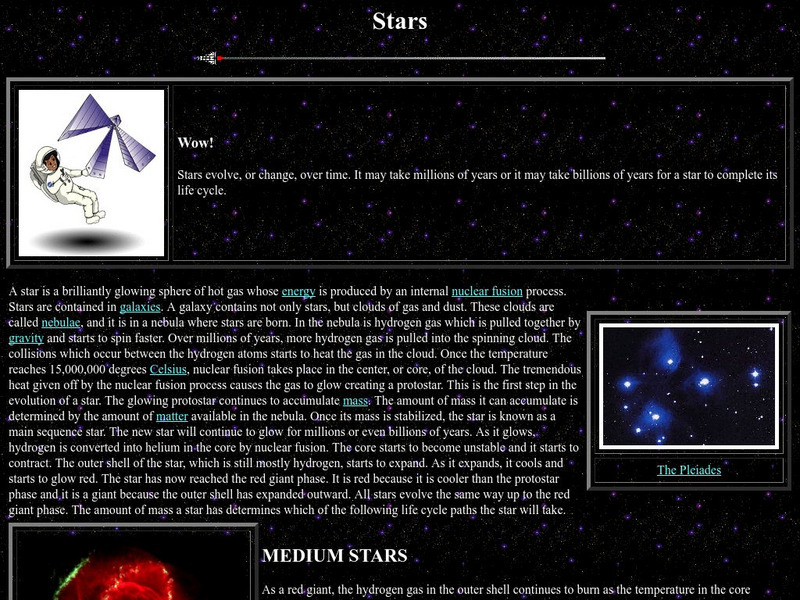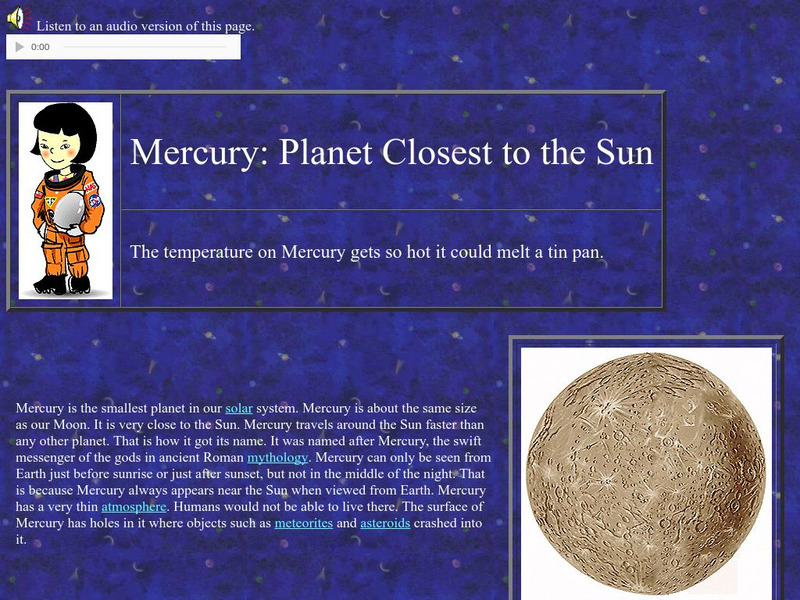Ducksters
Ducksters: Astronomy for Kids: Constellations
Kids learn about the constellations in the science of astronomy. These stars that form patterns when viewed from the Earth have been studied since ancient times.
Ducksters
Ducksters: Astronomy for Kids: Lunar and Solar Eclipses
Kids learn about lunar and solar eclipses in the science of astronomy including the umbra, antumbra, penumbra shadows as well as total, partial, and annular.
Ducksters
Ducksters: Astronomy for Kids: Space Exploration Timeline
Kids learn about the timeline of the history of space exploration including early astronomy, astronauts, spacecraft, planets, and the Moon.
Ducksters
Ducksters: Astronomy for Kids: Sunspots, Solar Winds, and Flares
Kids learn about sunspots, solar winds, and solar flares in the science of astronomy. What they are and how they affect Earth.
Ducksters
Ducksters: Astronomy for Kids: The Universe
Kids learn about the universe in the science of astronomy including expansion, size, dark matter and energy, age, and fun facts.
Ducksters
Ducksters: Astronomy for Kids: Stars
Kid's learn about the science of stars like our Sun. Giant hot balls of gas and energy made mostly of hydrogen and helium.
Other
Nicolai Copernici Musuem: Life of Nicolaus Copernicus
The Nicolai Copernici Museum has a timeline containing major events in Copernicus's life.
Sophia Learning
Sophia: Constellations: Lesson 4
This lesson will demonstrate how to predict constellations in the night sky. It is 4 of 4 in the series titled "Constellations."
NASA
Nasa: Imagine the Universe: "Nasa Detects One of Closest"
Site provides the article, "NASA Detects One Of Closest And Brightest Gamma Ray Bursts." Provides links to learn more about gamma rays and black holes as well as other resources.
ClassFlow
Class Flow: Orion
[Free Registration/Login Required] This flipchart features a well-known constellation in our skies - Orion.
Space Telescope Science Institute
Hubble Site: The "Rotten Egg" Nebula
This NASA Hubblesite page provides basic information about and photographs of the "Rotten Egg" nebula.
Space Telescope Science Institute
Hubble Site: Planetary Nebula
This site from Hubblesite provides a brief news article as well as colorful pictures of a nearby Planetary Nebula. Offers links to images, video, fast facts, a question and answer section as well as related links.
ClassFlow
Class Flow: We Are Part of a Larger Universe
[Free Registration/Login Required] The flipchart was made a culminating activity for a unit of study on mapping. It starts with a video on the sky, stars and then a brief look at the universe to earth with images then addresses are...
ClassFlow
Class Flow: Anatomy of the Sun
[Free Registration/Login Required] This is a middle school science lesson on the Sun. Activote questions are included. Submitted for Lucinda Schlotterback, in Sarasota County, FL.
ClassFlow
Class Flow: Asteroids, Meteoroids, and Comets
[Free Registration/Login Required] In this flipchart students will compare and contrast asteroids, meteoroids, and comets. They will also learn about their origins. Assessment questions are included.
ClassFlow
Class Flow: Astronomy and the Solar System
[Free Registration/Login Required] This flipchart presents the layers of the Sun and the components of the solar system.
ClassFlow
Class Flow: Astronomy Planets
[Free Registration/Login Required] The student will be able to compare and contrast the similarities and differences of the planets. The student will be able to name three facts about inner planets and three facts about outer planets.
ClassFlow
Class Flow: Finding Polaris
[Free Registration/Login Required] This flipchart explains how to find Polaris or the North Star.
Annenberg Foundation
Annenberg Learner: Five Question Survey: Basic Astronomy?
Find out your or your students' understanding of astronomy. To be used as a pre-assessment, your students can compare what they already know.
NASA
Nasa Star Child: The Milky Way
The information, geared mainly for younger viewers, provides simple and basic information about the Milky Way, and includes several embedded links to related information.
NASA
Nasa Star Child: Can You See Other Galaxies Without a Telescope?
Learn how and when to look up into the sky to see the Andromeda galaxy.
NASA
Nasa Star Child: Stars (Level 2)
This NASA site that explains the notable features of stars and constellations, including medium and massive stars. Many terms are clickable links to definitions. There is also a link to the Level 1 version of this site, which is written...
Other
Autumnal Equinox From the Electronic Sky
This site, written by an amateur astronomer with 30 years of study and interest, explains the equinox with photos and charts.
NASA
Nasa Star Child: Mercury
Provides good information about Mercury and is a good starting point for information about the planet along with pictures and audio. Links to a simple fact table, puzzle, glossary, and more detailed information.

























